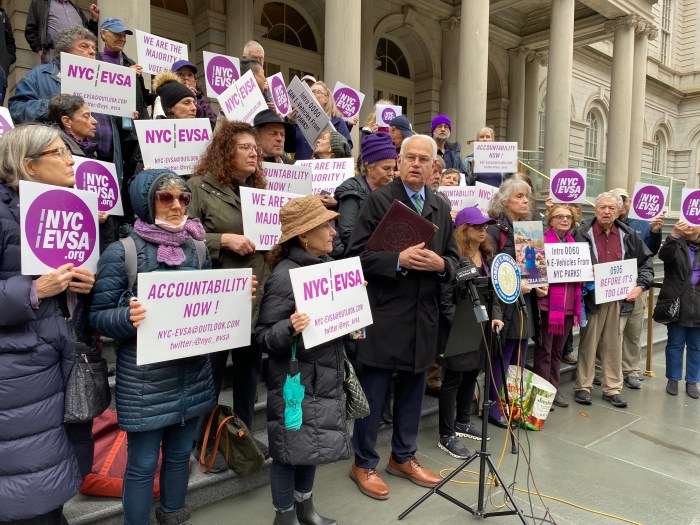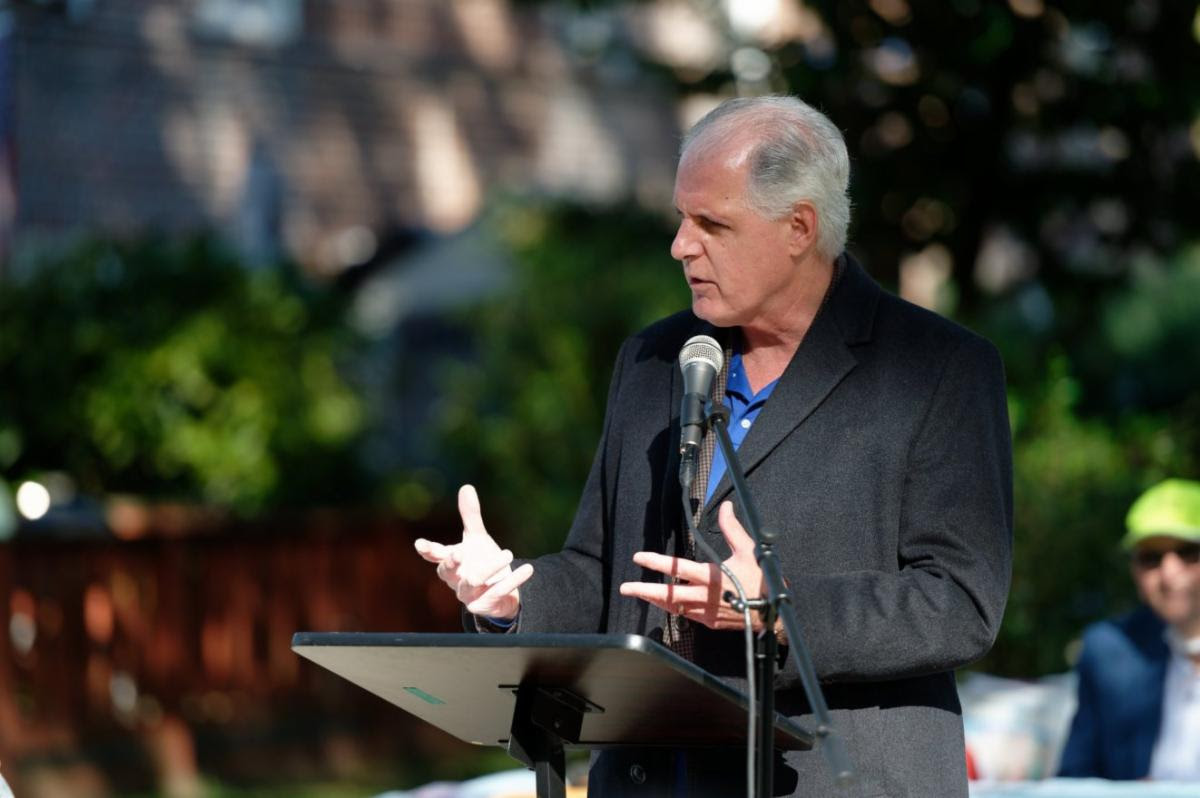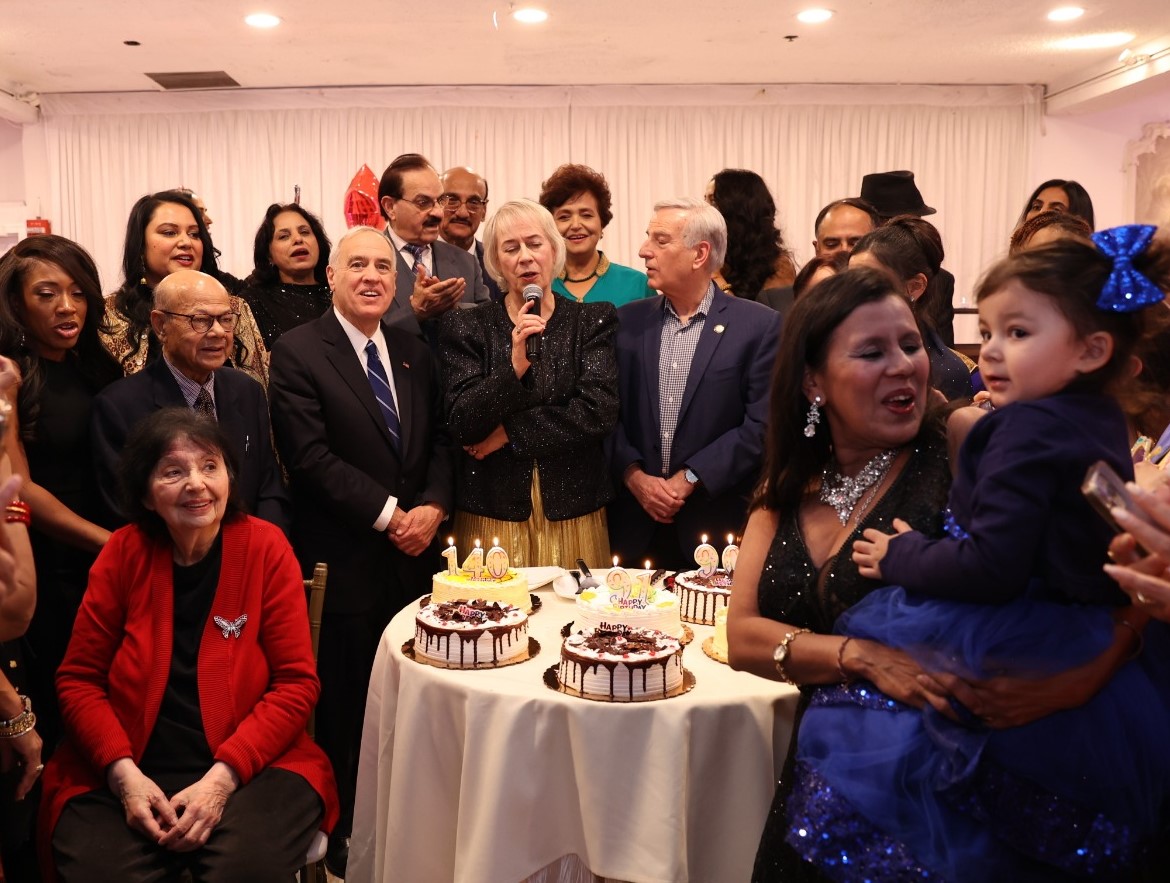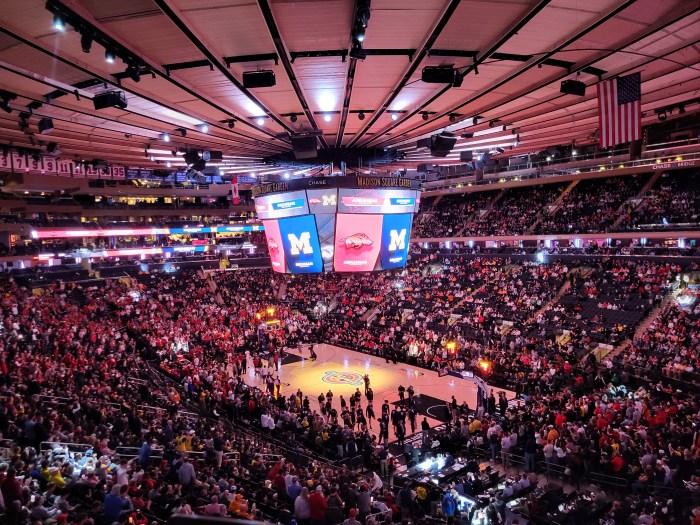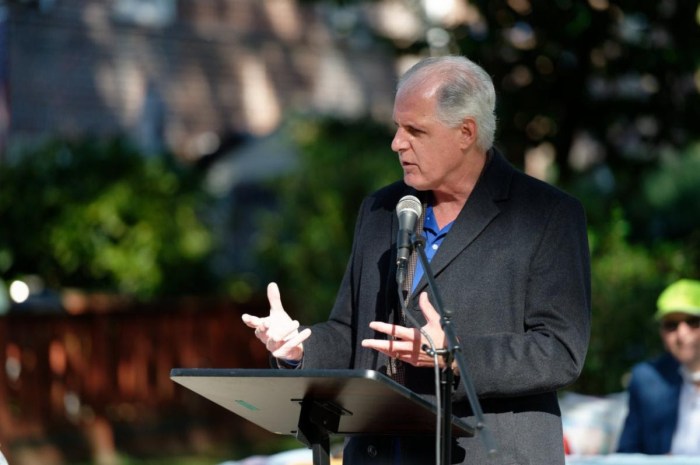
During Amazon’s first foray into New York City civic life, some sought to send the e-retailer packing, interrupting a City Council hearing Wednesday with chants of "Amazon has got to go."
The intrusions started before officials finished reading their opening statements at the first of three City Council hearings on Amazon’s planned campus in Long Island City, which the body titled, "Exposing the Closed-Door Process."
City lawmakers will not play an official role in approving the tech behemoth’s 4-million-square-foot facility negotiated by Mayor Bill de Blasio and Gov. Andrew M. Cuomo’s administrations, a source of contention aired by many Wednesday.
Several lawmakers spoke out against the executives’ decision to circumvent the city’s development review process, which culminates in a City Council vote, and opt for a state-run alternative called the general project plan (GPP). But by the end of the three-hour hearing, legislators were asking Amazon officials about more global business practices they considered problematic, inquiring about everything from employee strikes in Europe to its decision to sell facial recognition technology to federal immigration officials.

Council Speaker Corey Johnson opened the hearing by arguing that local lawmakers are best positioned to ensure the neighborhood is prepared to absorb the new outpost. Although the hub is slated to employ at least 25,000 full-time workers over the next decade, the state anticipates the Amazon campus will usher in a total of 131,000 new city residents, according to a state analysis cited by Johnson.
"The whole process was designed to protect the people we represent," Johnson said of the city’s project review protocols. "If you’re proud of the deal, if you’re proud of New York City, you should have said, ‘Yes, I want to come.’ "
The speaker ticked through ways that Amazon’s arrival may overwhelm the area, citing crowded schools, packed subways and tens of thousands of homeless New Yorkers.
"The only transportation piece of this project I’ve seen involves a helipad. I’m serious. This is like something out of the Onion," Johnson said.
James Patchett, president of the city’s Economic Development Corp., said the GPP was appropriate because Amazon needed assurance the arrangement would happen relatively quickly. The government will launch the GPP in January, according to Empire State Development, the state’s economic development arm.
"Critics will say our economic foundation is strong, and we don’t need these jobs. But as the head of the city’s economic development, I have a responsibility to ensure we never become complacent," Patchett said.
Patchett’s team and its state counterparts heralded the news this November that Amazon decided to split its second headquarters between Long Island City and Crystal City, Virginia. The company previously solicited bids for a hub it expected to spend $5 billion building for some 50,000 workers.
Instead, the firm chose to divide the project in two, investing about $2.5 billion in a campus in Queens, where it expects to pay an annual average salary of more than $150,000. Assuming the project proceeds as plans, Amazon is eligible to receive at least $2.8 billion in public benefits, according to the state. The company may get another $1.8 billion in state support if it builds out the campus further and employs at least 40,000 at the location.
Patchett said the public perks, some of which are available to any qualified company in the city, are worth the additional $27.5 billion in city and state tax revenue the deal is expected to generate over the next 25 years.
Roughly 57 percent of New Yorkers said they approved of the deal, but just 46 percent supported the benefits package, according to a Quinnipiac University Poll released last week.
Brian Huseman, Amazon’s vice president of public policy, did not directly answer when asked if Amazon would have chosen to locate outside the city if the incentives were not available.
He said Amazon was drawn to New York City because it is a diverse, innovative magnet for talent from across the globe, which will allow the company to create a long-term employee pipeline.
Huseman emphasized that the company has committed to contributing $5 million toward a $15 million workforce development initiative and to providing space for a public school, training programs, light manufacturing work and parkland, among other amenities.
"Our goal is to hire New Yorkers quickly," Huseman said. "We want to listen to [the Long Island City community]. We want to know what their needs are, and we want to work backward from that."
Officials structured the 40-year agreement so that half of the $1.3 billion anticipated property-related revenue from Amazon’s campus gets funneled into a fund for upgrading nearby infrastructure, such as the sewage system and streetscape. That comes on the heels of the city announcing $180 million in investments in Long Island City.
Ahead of the hearing, the Retail, Wholesale and Department Store Union and progressive advocacy groups huddled outside City Hall with a few current and former workers at Amazon’s fulfillment center on Staten Island. They argued elected officials should not roll out a welcome mat for a firm accused of undermining organized labor. A committee of employees at the Staten Island warehouse is trying to unionize the facility while working with RWDSU, as Bloomberg News first reported.
A woman wearing an RWDSU shirt read a statement on behalf of Rashad Long, a picker at the Staten Island facility, where Amazon is slated to receive up to $18 million in state tax benefits, provided that it employs at least 2,250 full-time workers at the site and meets other targets. The woman said Long was exhausted after working one of many 12-hour shifts and slogging through a four-hour commute.
Long said Amazon said it would operate a shuttle service and ride shares to assist workers struggling to get to the warehouse, but that has not happened, according to the statement.
Long contended in the statement that he and his co-workers do not get breaks long or frequently enough while working in areas that lack functioning sprinkler systems and smoke detectors. He added they are kept uncomfortably hot because robots are not able to function in cooler temperatures.
“All the company cares about is protecting their products, not their people,” the woman speaking on Long’s behalf said. “We are not robots; we are humans.”
The fulfillment center’s sprinklers and fire alarm system were working properly when last inspected by the FDNY, according to the city Department of Buildings. The site has a temporary certificate of occupancy indicating it is safe, but it must resolve a few minor issues uncovered during an October inspection before getting the final signoff for its fire protection system, the DOB said. For now, the department has required Amazon to have 23 fire guards posted throughout the buildings at all times, which it described as a standard practice for sites with temporary certificates of occupancy.
“The safety of our employees is our top priority, and the safety of the 2,500 employees at our Staten Island warehouse is no exception," an Amazon spokeswoman said in a statement. "We work continually to improve the safety results of employee operations by reducing physical risk through the design of processes, equipment and work areas, applying high standards of safety performance each day. We also conduct surveys with all associates each month, including those in our Staten Island warehouse, to ensure that they feel safe in their facility.”
Huseman reiterated at the hearing that the company prides itself on treating its personnel well.
“We respect workers’ rights to unionize," Huseman said.
Amazon’s business philosophy came up again, when Councilman Brad Lander asked why the company sold its facial recognition software to the federal government’s Immigration and Customs Enforcement team, if it supported immigrants.
"We provide that recognition service to a number of agencies," Huseman said.
As the packed council chambers began to thin out, Johnson asked Huseman if he would return for future public hearings on Amazon’s campus. Initially, the executive would not commit to another round.
“You’re taking $3 billion in money, and you won’t agree to come to public hearings?" Johnson said. "Is this what you think being a good neighbor in New York City is?”
After Johnson repeated the inquiry 11 times, Huseman relented.



